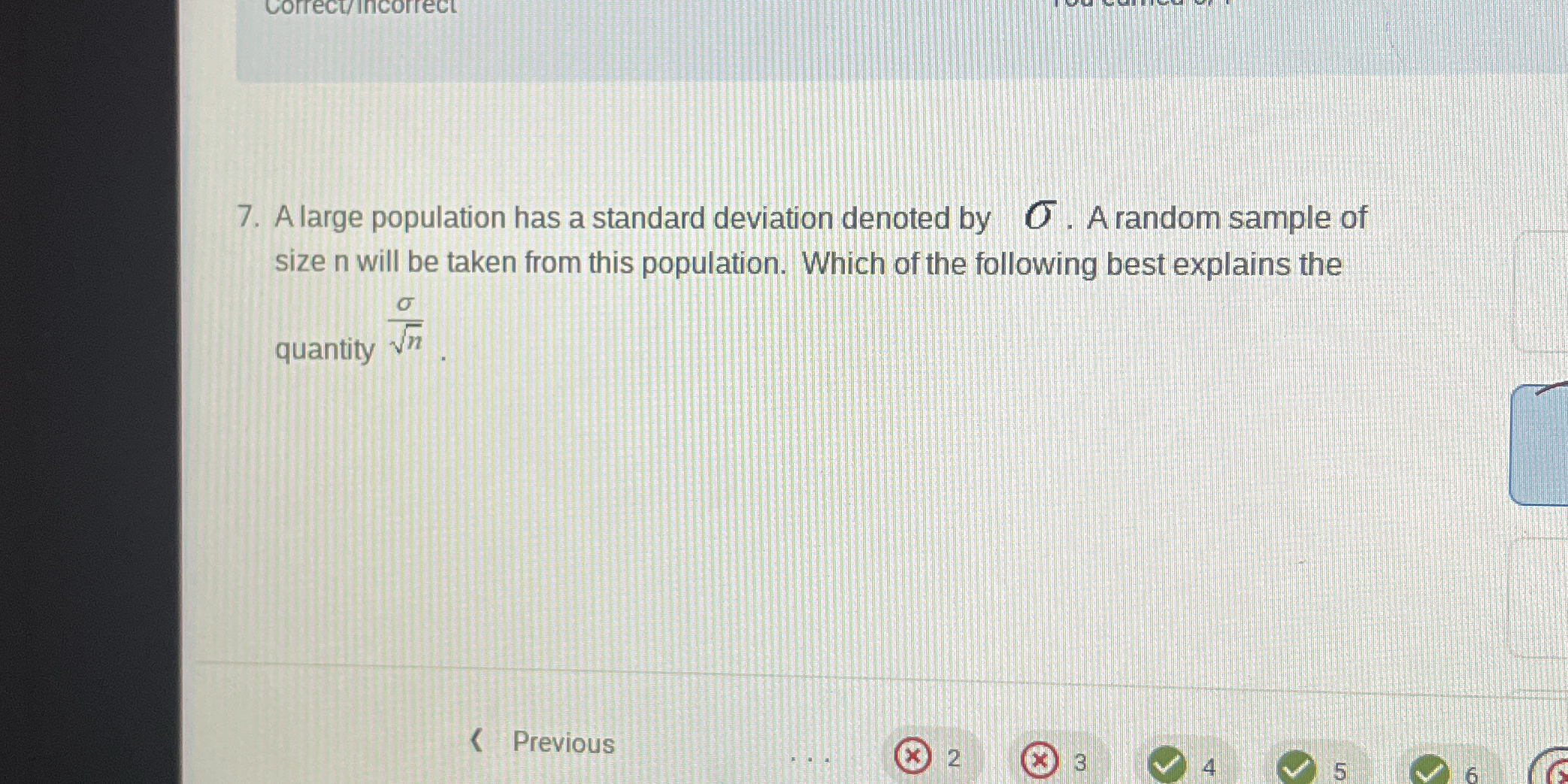A large population has a standard deviation denoted by σ. A random sample of size n will be taken from this population. Which of the following best explains the quantity σ/√n?

Understand the Problem
The question is asking for an explanation of the statistical quantity represented by the formula σ/√n, where σ is the standard deviation of a population and n is the sample size. It seeks to understand what this quantity signifies in the context of sampling from a large population.
Answer
The standard error of the mean is given by $\frac{\sigma}{\sqrt{n}}$, indicating the variability of sample means around the population mean.
Answer for screen readers
The quantity $\frac{\sigma}{\sqrt{n}}$ represents the standard error of the mean, indicating how much the sample means are expected to vary around the population mean.
Steps to Solve
- Understanding the formula
The formula $\frac{\sigma}{\sqrt{n}}$ is known as the standard error of the mean (SEM), where $\sigma$ is the standard deviation of the population and $n$ is the sample size.
- Significance of the standard error
The standard error measures the dispersion of sample means around the population mean. As the sample size increases, the standard error decreases, indicating that larger samples provide more accurate estimates of the population mean.
- Contextual explanation
In the context of sampling from a large population, $\frac{\sigma}{\sqrt{n}}$ quantifies how much variability can be expected in the sample means compared to the actual population mean. A smaller standard error suggests that the sample mean is likely to be close to the population mean.
- Mathematics behind it
When you draw samples of size $n$ from a population, the distribution of sample means can be approximated by a normal distribution (thanks to the Central Limit Theorem), centered at the population mean with a standard deviation of $\frac{\sigma}{\sqrt{n}}$.
- Practical implications
Understanding this quantity is essential for constructing confidence intervals and conducting hypothesis tests, as it helps determine how reliable the estimate of the population mean is based on the sample.
The quantity $\frac{\sigma}{\sqrt{n}}$ represents the standard error of the mean, indicating how much the sample means are expected to vary around the population mean.
More Information
The standard error decreases as the sample size increases, illustrating that larger samples yield more precise information about the population. This concept is crucial for conducting statistical analyses and making inferences about the population.
Tips
- Assuming the standard error is the same as the standard deviation. The standard error specifically relates to sampling distributions, while standard deviation refers to individual data points.
- Misunderstanding that a larger sample size decreases the standard deviation rather than just the standard error. The population standard deviation remains constant; only the variability of sample means is affected.
AI-generated content may contain errors. Please verify critical information